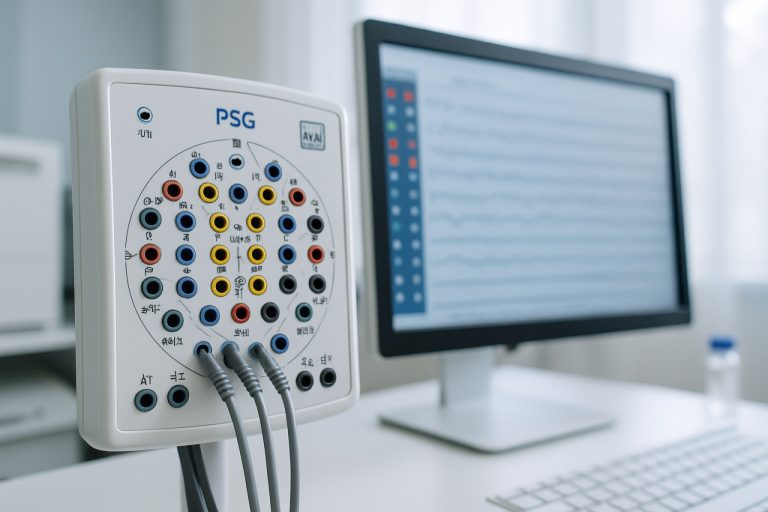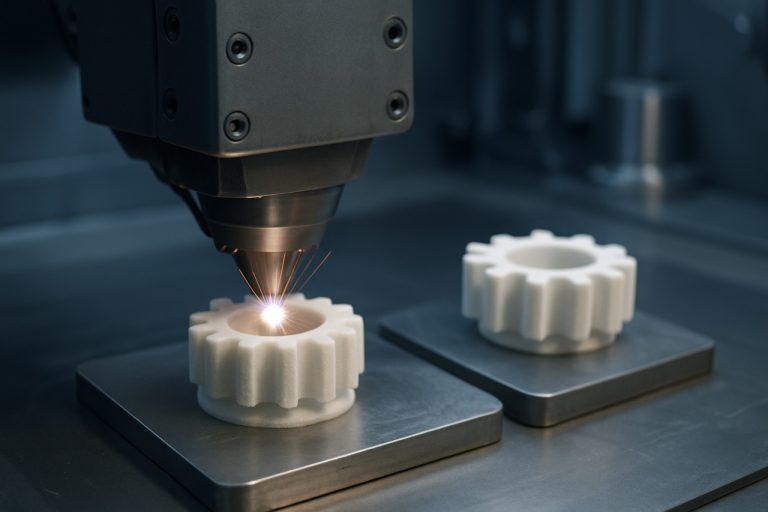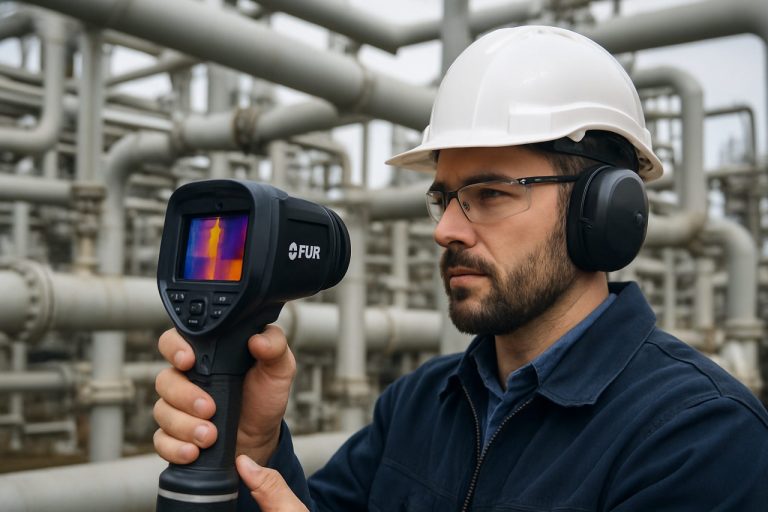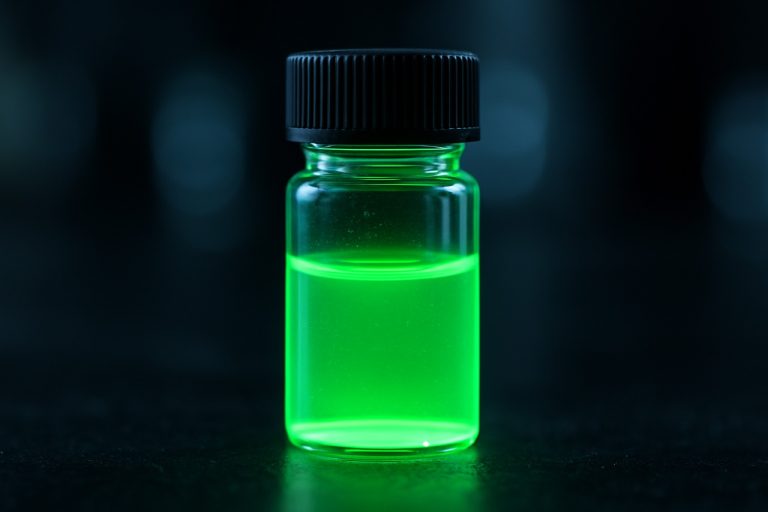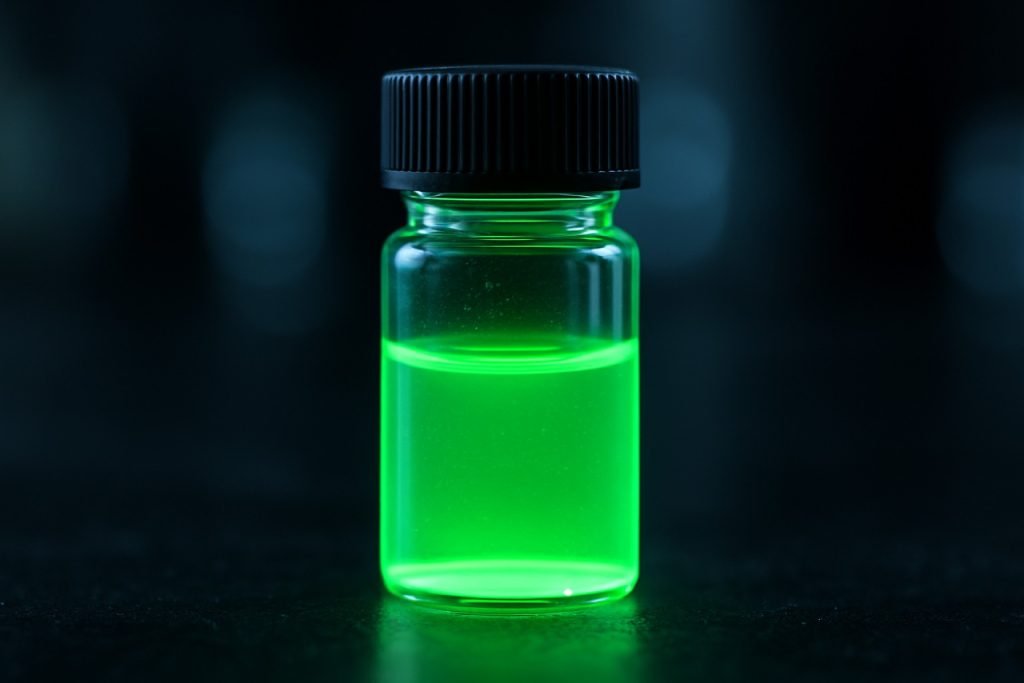
Phosphor Upconversion Nanomaterials Manufacturing in 2025: Unveiling Breakthroughs, Market Dynamics, and the Road to Next-Gen Applications. Explore How Innovation and Demand Are Shaping the Industry’s Future.
- Executive Summary: 2025 Market Overview and Key Insights
- Technology Fundamentals: Upconversion Mechanisms and Material Science
- Manufacturing Processes: Innovations, Scale-Up, and Quality Control
- Key Players and Industry Ecosystem (e.g., nanoco-technologies.com, schott.com)
- Current Market Size, Segmentation, and Regional Trends
- Emerging Applications: Biomedical Imaging, Security, and Photonics
- Supply Chain, Raw Materials, and Sustainability Initiatives
- Regulatory Landscape and Industry Standards (e.g., ieee.org, iso.org)
- Market Forecasts: 2025–2030 Growth Projections and Drivers
- Future Outlook: Disruptive Technologies, Investment, and Strategic Roadmaps
- Sources & References
Executive Summary: 2025 Market Overview and Key Insights
The global landscape for phosphor upconversion nanomaterials (UCNPs) manufacturing in 2025 is characterized by a convergence of technological innovation, expanding application domains, and strategic investments from both established materials companies and emerging nanotechnology specialists. UCNPs, which convert low-energy photons (typically near-infrared) into higher-energy visible or ultraviolet emissions, are increasingly sought after for applications in bioimaging, security inks, photovoltaics, and optoelectronics.
In 2025, the manufacturing sector is witnessing a shift from laboratory-scale synthesis to scalable, industrial-grade production. Key players such as Merck KGaA (operating as Sigma-Aldrich in the research chemicals market) and Thermo Fisher Scientific are expanding their catalogues of rare-earth-doped nanomaterials, including upconversion phosphors, to meet growing demand from research and industry. These companies leverage advanced wet-chemical and solid-state synthesis techniques, focusing on reproducibility, particle size control, and surface functionalization to enable integration into commercial devices.
Asian manufacturers, particularly in China and South Korea, are rapidly scaling up production capacities. Shanghai Aladdin Biochemical Technology and Strem Chemicals (now part of Ascensus Specialties) are notable for supplying a broad range of upconversion nanomaterials to both domestic and international markets. These suppliers emphasize high-purity, monodisperse nanoparticles tailored for specific end-use requirements, such as anti-counterfeiting inks and medical diagnostics.
The sector is also seeing increased collaboration between material suppliers and device manufacturers. For example, OSRAM, a leader in photonics and lighting, is exploring the integration of upconversion phosphors into next-generation LEDs and sensor technologies. Such partnerships are expected to accelerate the commercialization of UCNP-enabled products, particularly in the fields of security, display technology, and energy harvesting.
Looking ahead, the outlook for 2025 and the following years is robust. The market is projected to benefit from ongoing advances in synthesis methods—such as microwave-assisted and solvothermal techniques—that promise higher yields and lower costs. Regulatory and quality standards are also maturing, with industry bodies and major suppliers working to ensure batch-to-batch consistency and biocompatibility for medical applications.
In summary, the phosphor upconversion nanomaterials manufacturing sector in 2025 is marked by rapid industrialization, global supply chain expansion, and a strong pipeline of application-driven innovation. The involvement of major chemical and photonics companies, alongside agile regional suppliers, positions the industry for sustained growth and technological breakthroughs in the near future.
Technology Fundamentals: Upconversion Mechanisms and Material Science
Phosphor upconversion nanomaterials (UCNMs) are at the forefront of advanced photonic technologies, leveraging their unique ability to convert low-energy photons (typically near-infrared) into higher-energy visible or ultraviolet emissions. The manufacturing of these nanomaterials in 2025 is characterized by a convergence of precision chemistry, scalable synthesis, and integration with device fabrication, driven by both established and emerging industry players.
The core of UCNM manufacturing lies in the controlled doping of host lattices—commonly fluoride-based matrices such as NaYF4—with rare-earth ions like Yb3+, Er3+, and Tm3+. The choice of host and dopant concentrations is critical, as it directly impacts upconversion efficiency and emission wavelength. Recent advances have focused on optimizing particle size (typically 10–100 nm), surface passivation, and core-shell architectures to minimize non-radiative losses and enhance quantum yield.
In 2025, leading manufacturers employ a variety of synthesis techniques, including high-temperature thermal decomposition, hydrothermal/solvothermal methods, and co-precipitation. These methods are selected based on the desired particle uniformity, crystallinity, and scalability. For instance, Merck KGaA (operating as Sigma-Aldrich in the research chemicals sector) supplies a range of upconversion phosphors and nanomaterials, supporting both academic and industrial R&D. Their catalog includes standardized NaYF4:Yb,Er nanoparticles, which are widely used as benchmarks in the field.
Another significant player, Strem Chemicals, Inc., provides high-purity rare-earth precursors and custom synthesis services for upconversion materials, catering to the growing demand for tailored nanomaterials in bioimaging, security inks, and optoelectronics. Meanwhile, Thermo Fisher Scientific offers both raw materials and analytical solutions for quality control in nanomaterial production, ensuring batch-to-batch consistency and regulatory compliance.
The industry is also witnessing the emergence of specialized nanomaterial companies such as NanoAmor, which focuses on scalable production of upconversion nanoparticles with customizable surface chemistries for integration into sensors and medical diagnostics. These companies are increasingly adopting green chemistry approaches, reducing the use of toxic solvents and improving energy efficiency in synthesis.
Looking ahead, the next few years are expected to see further automation and digitalization of UCNM manufacturing, with real-time process monitoring and AI-driven optimization becoming standard. The push for higher upconversion efficiencies and biocompatibility is likely to drive innovation in both material design and synthesis protocols, positioning phosphor upconversion nanomaterials as key enablers in photonics, life sciences, and anti-counterfeiting technologies.
Manufacturing Processes: Innovations, Scale-Up, and Quality Control
The manufacturing of phosphor upconversion nanomaterials (UCNPs) is undergoing significant transformation in 2025, driven by advances in synthesis techniques, scale-up strategies, and quality control protocols. These nanomaterials, which convert low-energy photons into higher-energy emissions, are increasingly vital for applications in bioimaging, security inks, and optoelectronics.
Recent years have seen a shift from traditional high-temperature solid-state reactions to more controlled wet-chemical methods, such as thermal decomposition, hydrothermal, and solvothermal synthesis. These approaches offer better control over particle size, morphology, and phase purity—critical parameters for upconversion efficiency. Leading manufacturers, including Sigma-Aldrich (now part of Merck KGaA), have expanded their catalog of rare-earth-doped nanomaterials, providing standardized precursors and dispersions for research and industrial use.
Scale-up remains a central challenge, as laboratory protocols often do not translate directly to industrial volumes. In 2025, companies such as Nanocs and Strem Chemicals are investing in continuous-flow reactors and automated batch systems to ensure reproducibility and scalability. These systems enable precise control of reaction parameters, reducing batch-to-batch variability and supporting kilogram-scale production. Additionally, the adoption of green chemistry principles—such as solvent recycling and lower reaction temperatures—is becoming more prevalent, aligning with sustainability goals and regulatory requirements.
Quality control is increasingly rigorous, with manufacturers implementing advanced analytical techniques to ensure product consistency. High-resolution transmission electron microscopy (HRTEM), X-ray diffraction (XRD), and photoluminescence spectroscopy are routinely employed to characterize crystal structure, particle size distribution, and upconversion efficiency. Thermo Fisher Scientific provides instrumentation and analytical services that are widely adopted across the industry for these purposes.
Looking ahead, the outlook for phosphor upconversion nanomaterials manufacturing is positive. The integration of artificial intelligence and machine learning for process optimization is anticipated to further enhance yield and quality. Partnerships between material suppliers and end-users are fostering the development of application-specific UCNPs, particularly for medical diagnostics and anti-counterfeiting technologies. As regulatory frameworks for nanomaterials evolve, manufacturers are expected to invest further in traceability and compliance systems, ensuring safe and reliable products for global markets.
Key Players and Industry Ecosystem (e.g., nanoco-technologies.com, schott.com)
The global landscape for phosphor upconversion nanomaterials manufacturing in 2025 is characterized by a blend of established specialty materials companies, innovative nanotechnology startups, and collaborative research initiatives. These players are driving advancements in synthesis, scalability, and application integration, particularly for bioimaging, security inks, and optoelectronic devices.
Among the most prominent manufacturers, SCHOTT AG stands out as a leading supplier of specialty glass and advanced materials, including phosphor-based products. SCHOTT’s expertise in glass-ceramic matrices and rare-earth doping positions it as a key supplier for upconversion nanomaterial components, especially for photonic and medical device applications. The company’s ongoing investments in R&D and production capacity are expected to support the growing demand for high-purity, reproducible nanomaterials through 2025 and beyond.
Another notable player is Nanoco Technologies, which specializes in the scalable synthesis of nanomaterials, including quantum dots and upconversion phosphors. Nanoco’s proprietary manufacturing processes enable the production of uniform, cadmium-free nanocrystals, addressing both performance and regulatory requirements for next-generation display and imaging technologies. The company collaborates with global electronics and healthcare firms to integrate upconversion materials into commercial products.
In Asia, several companies are expanding their presence in the upconversion nanomaterials sector. Tosoh Corporation in Japan leverages its advanced ceramics and specialty chemicals divisions to develop rare-earth-doped phosphors for lighting, security, and biomedical applications. Tosoh’s vertically integrated supply chain and focus on high-value materials make it a significant contributor to the industry ecosystem.
The industry also benefits from the involvement of suppliers such as Sigma-Aldrich (Merck KGaA), which provides research-grade upconversion nanoparticles and precursors to academic and industrial laboratories worldwide. Their catalog offerings facilitate rapid prototyping and small-scale production, supporting innovation and technology transfer.
Looking ahead, the ecosystem is expected to see increased collaboration between material manufacturers, device integrators, and end-users. Strategic partnerships and joint ventures are likely to accelerate the commercialization of upconversion nanomaterials, particularly as demand rises in medical diagnostics, anti-counterfeiting, and energy-efficient lighting. The focus will remain on improving synthesis reproducibility, environmental safety, and cost-effectiveness to enable broader adoption across industries.
Current Market Size, Segmentation, and Regional Trends
The global market for phosphor upconversion nanomaterials (UCNPs) manufacturing is experiencing steady growth in 2025, driven by expanding applications in bioimaging, security, photovoltaics, and display technologies. While precise market size figures are closely held by industry participants, the sector is characterized by a mix of established specialty chemical companies and innovative nanomaterials startups. The market is segmented by material composition (e.g., rare-earth-doped fluoride, oxide, and silicate nanomaterials), end-use application, and geographic region.
Material-wise, rare-earth-doped fluoride nanomaterials—particularly those based on NaYF4 matrices doped with Yb3+, Er3+, or Tm3+—remain the dominant product category due to their high upconversion efficiency and stability. Other compositions, such as oxides and silicates, are gaining traction for niche applications requiring specific emission wavelengths or enhanced biocompatibility. Leading manufacturers such as Merck KGaA (operating as Sigma-Aldrich in the research chemicals sector) and Thermo Fisher Scientific supply a range of upconversion nanomaterials for research and industrial use, with product lines tailored to both standard and custom specifications.
Application segmentation reveals that biomedical imaging and diagnostics continue to be the largest and fastest-growing end-use sector, leveraging the unique anti-Stokes emission properties of UCNPs for deep-tissue imaging and multiplexed detection. Security printing and anti-counterfeiting are also significant, with companies like Phosphorex and Strem Chemicals providing specialized UCNPs for integration into inks and coatings. The photovoltaics segment is emerging, with research collaborations aiming to enhance solar cell efficiency by converting infrared light to visible wavelengths.
Regionally, Asia-Pacific leads in both production and consumption, propelled by robust manufacturing infrastructure in China, South Korea, and Japan. Chinese companies, including Shanghai Aladdin Biochemical Technology, are notable for their scale and cost competitiveness, supplying both domestic and international markets. North America and Europe remain important centers for innovation and high-value applications, with a focus on medical and security sectors. The United States, Germany, and the United Kingdom host several research-driven enterprises and academic-industry partnerships.
Looking ahead, the market is expected to see continued growth through 2027, supported by advances in scalable synthesis methods, improved surface functionalization, and regulatory approvals for biomedical uses. Strategic collaborations between material suppliers, device manufacturers, and end-users are anticipated to accelerate commercialization, particularly in healthcare and security domains.
Emerging Applications: Biomedical Imaging, Security, and Photonics
Phosphor upconversion nanomaterials (UCNPs) are gaining significant traction in advanced applications such as biomedical imaging, security, and photonics, with manufacturing processes evolving rapidly to meet growing demand in 2025 and beyond. These nanomaterials, typically based on rare-earth-doped crystals like NaYF4, convert low-energy photons (usually near-infrared) into higher-energy visible or ultraviolet emissions, enabling unique functionalities across sectors.
In the biomedical field, the demand for high-purity, monodisperse UCNPs is driving manufacturers to refine synthesis techniques, such as thermal decomposition and hydrothermal methods, to achieve precise control over particle size, surface chemistry, and luminescence efficiency. Companies like MilliporeSigma (the U.S. and Canada life science business of Merck KGaA) and Thermo Fisher Scientific are prominent suppliers of upconversion nanomaterials, offering a range of customizable UCNPs for research and preclinical imaging. These materials are increasingly integrated into bioimaging probes and contrast agents, leveraging their deep tissue penetration and low background autofluorescence for high-resolution imaging.
Security applications are also propelling the manufacturing sector, with UCNPs being incorporated into anti-counterfeiting inks, security threads, and authentication labels. The unique upconversion emission signatures are difficult to replicate, making them ideal for high-security printing. OSRAM, a global leader in photonics and lighting, has invested in phosphor technologies for security and display applications, while Philips continues to explore upconversion materials for advanced lighting and security solutions. These companies are focusing on scalable, cost-effective synthesis routes, such as solid-state reactions and sol-gel processes, to enable mass production.
In photonics, the integration of UCNPs into lasers, optical amplifiers, and display technologies is accelerating. Manufacturers are optimizing doping concentrations and host matrices to maximize upconversion efficiency and stability under operational conditions. Coherent Corp., a major photonics component manufacturer, is actively developing upconversion phosphors for use in next-generation optical devices, including compact solid-state lasers and high-brightness displays.
Looking ahead, the manufacturing landscape for phosphor upconversion nanomaterials is expected to be shaped by advances in green synthesis, automation, and quality control. Industry leaders are investing in sustainable production methods to reduce environmental impact and ensure regulatory compliance, particularly for biomedical and consumer applications. As demand surges across imaging, security, and photonics, the sector is poised for robust growth, with ongoing collaborations between material suppliers, device manufacturers, and end-users driving innovation and commercialization.
Supply Chain, Raw Materials, and Sustainability Initiatives
The supply chain for phosphor upconversion nanomaterials (UCNPs) manufacturing in 2025 is characterized by a complex interplay of raw material sourcing, advanced synthesis techniques, and growing sustainability initiatives. The core raw materials for UCNPs are rare earth elements (REEs) such as yttrium, ytterbium, erbium, and thulium, which are primarily sourced from mining operations in China, Australia, and the United States. China remains the dominant supplier, accounting for over 60% of global REE production, which directly impacts the availability and pricing of precursors for UCNP synthesis. Companies such as Aluminum Corporation of China Limited (CHINALCO) and China Molybdenum Co., Ltd. are major players in the extraction and supply of these critical materials.
The manufacturing process for UCNPs typically involves high-temperature solid-state reactions, hydrothermal synthesis, or sol-gel methods, each requiring stringent control over purity and particle size. Leading specialty chemical suppliers, including Sigma-Aldrich (Merck KGaA) and Thermo Fisher Scientific, provide high-purity rare earth salts and organometallic precursors tailored for nanomaterial synthesis. These companies have expanded their product lines in recent years to meet the growing demand from sectors such as bioimaging, security inks, and optoelectronics.
Sustainability is an increasing focus in the UCNP supply chain. Environmental concerns over REE mining—such as habitat disruption, water contamination, and hazardous waste—have prompted both regulatory scrutiny and industry-led initiatives. In 2025, manufacturers are investing in closed-loop recycling systems and greener synthesis routes. For example, LANXESS and Solvay are developing processes to recover and recycle rare earths from end-of-life electronics and industrial waste, reducing reliance on primary mining and lowering the environmental footprint.
Looking ahead, the supply chain is expected to become more resilient and sustainable. Efforts are underway to diversify sourcing, with new mining projects in Australia and North America aiming to reduce dependence on Chinese exports. Additionally, research into alternative, less toxic dopants and scalable green synthesis methods is accelerating, supported by collaborations between industry and academic institutions. As regulatory pressures mount and end-users demand traceable, eco-friendly materials, companies that can demonstrate responsible sourcing and manufacturing practices are likely to gain a competitive edge in the UCNP market.
Regulatory Landscape and Industry Standards (e.g., ieee.org, iso.org)
The regulatory landscape and industry standards for phosphor upconversion nanomaterials manufacturing are evolving rapidly as these materials gain traction in applications such as bioimaging, security inks, and optoelectronics. In 2025, the sector is witnessing increased attention from international standards organizations and regulatory bodies, reflecting both the promise and the challenges of nanomaterial commercialization.
The International Organization for Standardization (ISO) continues to play a pivotal role in setting global standards for nanomaterials. ISO/TC 229, the technical committee on nanotechnologies, has developed a suite of standards addressing terminology, measurement, and health and safety aspects of nanomaterials, including those relevant to upconversion phosphors. Notably, ISO 80004 provides standardized vocabulary, while ISO/TR 13014 offers guidance on physico-chemical characterization of engineered nanoscale materials. These frameworks are increasingly referenced by manufacturers to ensure product consistency and regulatory compliance.
In parallel, the Institute of Electrical and Electronics Engineers (IEEE) is contributing to the development of standards for nanomaterials used in electronic and photonic devices. IEEE’s Nanotechnology Council has initiated working groups focused on the integration of nanomaterials, including upconversion phosphors, into optoelectronic systems. These efforts are expected to yield new guidelines in the next few years, particularly as upconversion nanomaterials are adopted in advanced display and sensor technologies.
On the regulatory front, the European Union’s REACH regulation and the U.S. Environmental Protection Agency’s TSCA framework are increasingly scrutinizing the production and use of nanomaterials. Manufacturers are required to provide detailed safety data and risk assessments for upconversion nanomaterials, especially those containing rare earth elements or heavy metals. This has prompted leading producers, such as OSRAM and Philips, to invest in advanced material characterization and lifecycle analysis to meet evolving regulatory demands.
Industry associations, including the Nanotechnology Industries Association, are actively engaging with regulators to shape pragmatic, science-based policies. These organizations facilitate dialogue between manufacturers, researchers, and policymakers, aiming to harmonize standards and streamline compliance processes.
Looking ahead, the next few years are expected to bring greater harmonization of international standards, with ISO and IEEE likely to release updated guidelines specific to upconversion nanomaterials. Regulatory agencies are anticipated to refine their frameworks, balancing innovation with safety and environmental stewardship. Manufacturers that proactively align with these standards and regulations will be best positioned to capitalize on the expanding market for phosphor upconversion nanomaterials.
Market Forecasts: 2025–2030 Growth Projections and Drivers
The market for phosphor upconversion nanomaterials manufacturing is poised for significant growth between 2025 and 2030, driven by expanding applications in bioimaging, security, photovoltaics, and display technologies. Upconversion nanomaterials, which convert low-energy photons into higher-energy emissions, are increasingly sought after for their unique optical properties and potential to enhance device performance across multiple sectors.
Key industry players such as Merck KGaA (operating as Sigma-Aldrich), Thermo Fisher Scientific, and Nanocs are actively expanding their portfolios of upconversion nanoparticles, responding to rising demand from research institutions and commercial end-users. These companies are investing in scalable synthesis methods, including hydrothermal, solvothermal, and co-precipitation techniques, to improve yield, reproducibility, and cost-effectiveness. For instance, Merck KGaA offers a range of rare-earth-doped upconversion nanoparticles tailored for both academic and industrial R&D.
From 2025 onward, the market is expected to benefit from increased integration of upconversion nanomaterials in medical diagnostics and imaging, where their deep tissue penetration and low background fluorescence offer clear advantages over conventional fluorophores. The global push for advanced anti-counterfeiting solutions is also accelerating adoption, with manufacturers like Strem Chemicals (now part of Ascensus Specialties) supplying custom upconversion phosphors for security inks and authentication devices.
In the energy sector, upconversion nanomaterials are being explored to boost the efficiency of photovoltaic cells by converting infrared light into usable wavelengths. Companies such as AMEC and Nanocs are collaborating with solar technology developers to integrate these materials into next-generation panels, aiming for commercial viability by the late 2020s.
Market forecasts for 2025–2030 anticipate a compound annual growth rate (CAGR) in the high single to low double digits, reflecting both technological advancements and expanding end-use cases. The Asia-Pacific region, led by China, Japan, and South Korea, is projected to be a major growth engine due to robust investments in nanotechnology manufacturing infrastructure and government-backed R&D initiatives.
Looking ahead, the sector’s outlook is shaped by ongoing improvements in material purity, particle size control, and surface functionalization, which are critical for regulatory approval and commercial adoption. As leading suppliers such as Thermo Fisher Scientific and Merck KGaA continue to scale up production and diversify their offerings, the phosphor upconversion nanomaterials market is set to play a pivotal role in the evolution of advanced photonic and biomedical technologies through 2030.
Future Outlook: Disruptive Technologies, Investment, and Strategic Roadmaps
The future outlook for phosphor upconversion nanomaterials (UCNPs) manufacturing is shaped by rapid technological advances, strategic investments, and evolving industry roadmaps. As of 2025, the sector is witnessing a convergence of disruptive synthesis techniques, automation, and scale-up strategies aimed at meeting the growing demand for UCNPs in applications such as bioimaging, security inks, photovoltaics, and solid-state lighting.
A key trend is the transition from small-scale, batch-based synthesis to continuous-flow and automated manufacturing processes. This shift is driven by the need for reproducibility, scalability, and cost-effectiveness. Companies like Merck KGaA (operating as MilliporeSigma in the US) and Thermo Fisher Scientific are investing in advanced nanomaterial production platforms, leveraging their expertise in chemical synthesis and process engineering to deliver high-purity, monodisperse UCNPs at commercial scales. These firms are also focusing on green chemistry approaches to minimize environmental impact and comply with tightening regulatory standards.
Another disruptive technology on the horizon is the integration of artificial intelligence (AI) and machine learning for process optimization and quality control. By harnessing real-time data analytics, manufacturers can fine-tune reaction parameters, predict product quality, and reduce waste. This digital transformation is expected to accelerate the commercialization of UCNPs with tailored optical properties, supporting their adoption in next-generation medical diagnostics and anti-counterfeiting technologies.
Strategic partnerships and investments are also shaping the industry landscape. Leading specialty chemical companies such as Strem Chemicals (now part of Ascensus Specialties) and Alfa Aesar (a Thermo Fisher brand) are expanding their UCNP portfolios through collaborations with academic institutions and startups. These alliances aim to bridge the gap between laboratory-scale innovation and industrial-scale production, ensuring a steady pipeline of novel materials and formulations.
Looking ahead, the next few years are likely to see increased standardization and certification efforts, as industry bodies and manufacturers work to establish quality benchmarks for UCNPs. This will be crucial for enabling their integration into regulated sectors such as healthcare and security. Furthermore, as end-user industries demand more sustainable and cost-competitive solutions, manufacturers are expected to invest in recycling technologies and circular economy models for rare earth elements used in UCNPs.
In summary, the phosphor upconversion nanomaterials manufacturing sector in 2025 is characterized by technological disruption, strategic investment, and a clear focus on scalability and sustainability. The combined efforts of established players like Merck KGaA, Thermo Fisher Scientific, Strem Chemicals, and Alfa Aesar are expected to drive the industry toward broader commercialization and new application frontiers in the coming years.
Sources & References
- Thermo Fisher Scientific
- Shanghai Aladdin Biochemical Technology
- Strem Chemicals
- OSRAM
- SCHOTT AG
- Phosphorex
- Philips
- Coherent Corp.
- Aluminum Corporation of China Limited (CHINALCO)
- China Molybdenum Co., Ltd.
- LANXESS
- International Organization for Standardization (ISO)
- Institute of Electrical and Electronics Engineers (IEEE)
- Alfa Aesar
